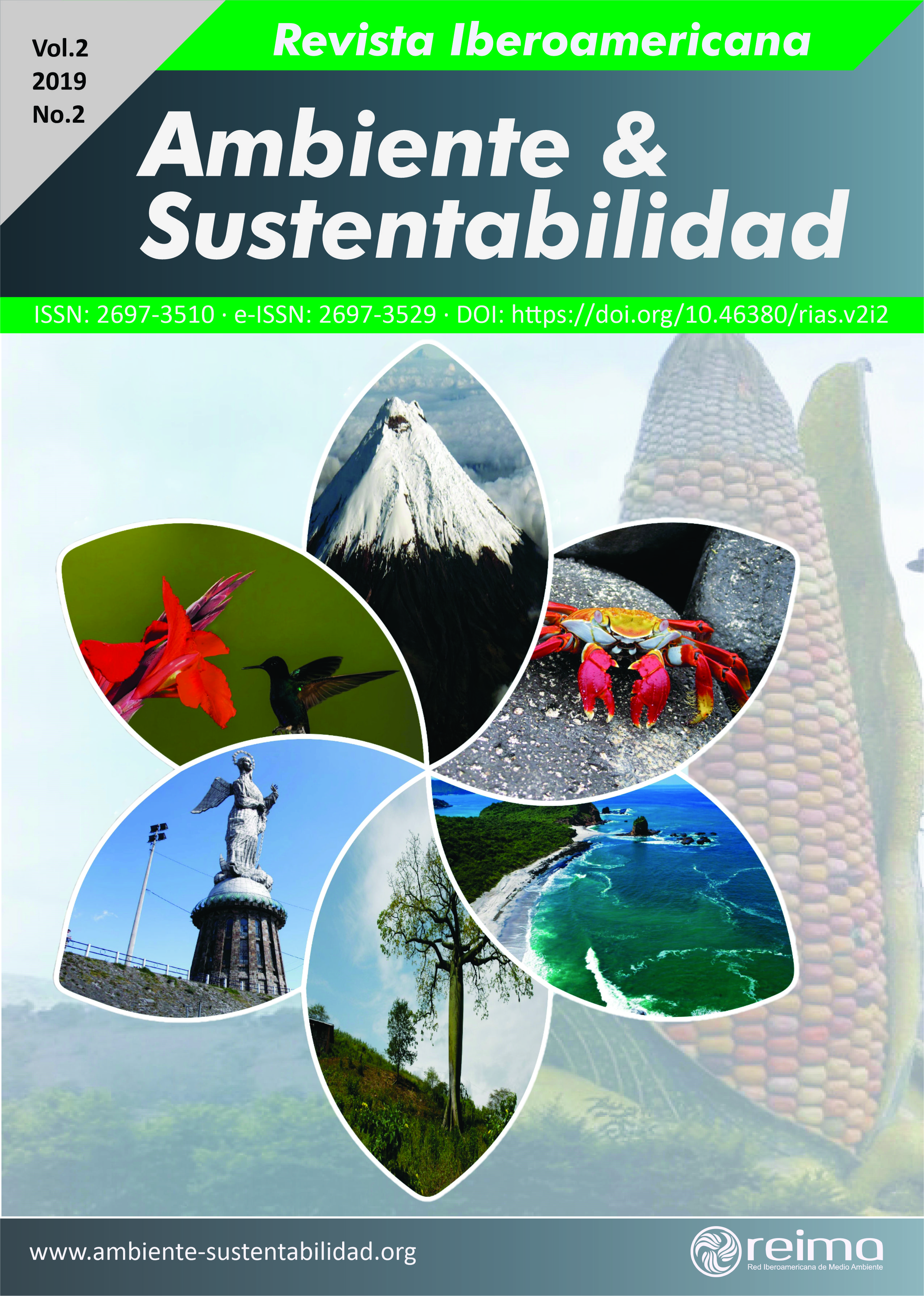Estimation of the marginal effect of urban vegetation on the removal of PM2.5 in Medellín, Colombia.
DOI:
https://doi.org/10.46380/rias.v2i2.50Keywords:
air pollution, tree cover, UFORE model.Abstract
At present, the city of Medellin, in Colombia, has a chronic air quality problem. An alternative to reduce the effects of such contamination is to increase tree-lined areas. In this work, the marginal effect of the increase in urban tree cover on the removal of PM2.5 was estimated. In this sense, it uses the UFORE methodology to calculate the removal of this contaminant in a distributed manner over the city, using Sentinel 2A satellite images to identify the coverage and estimate the Foliar Area Index (IAF), which is an input Important for calculations. The records of stations in 2017 were taken as a base. When calculating the removal of PM2.5 for the base condition, a value close to 83 t was found for the entire metropolitan area and 3 t for Medellin. When the total tree area is increased by 1% proportionally throughout the city, the value of the removal increases by 1%. On the other hand, by locating arborization in the areas with the highest concentration of the pollutant, the total removal has an increase close to 1.6%, which would imply that the arborization decision must be prioritized in those places to be effective. Likewise, it was preliminarily estimated that optimizing tree cover IAF may be more effective in removal than increasing urban tree area, although other tree benefits should be taken into account for planting decisions.
Downloads
Metrics
References
Agudelo, L.C. y Miralles, J.L. (2015). Design and management of the metropolitan green belt of Aburrá Valley, Colombia. WIT Transactions on Ecology and the Environment, 194, 193–203. https://doi.org/10.2495/SC150181
Alcaldía de Medellín y Área Metropolitana Valle de Aburrá. (2011). Bio 2030 - Plan Director Medellín, Valle de Aburrá. (1ra ed.). Editorial Mesa Editores. https://n9.cl/i3te
Área Metropolitana del Valle de Aburrá y Universidad Pontificia Bolivariana. (2018). Inventario de emisiones atmosféricas del Valle de Aburrá – Año 2018. https://n9.cl/d3kux
Área Metropolitana del Valle de Aburrá. (2019). www.metropol.gov.co
Arroyave, M., Posada, M., Nowak, D. y Hoehn, R. (2019). Remoción de contaminantes atmosféricos por el bosque urbano en el valle de Aburrá. Colombia Forestal, 22(1), 5-16. http://dx.doi.org/10.14483/2256201X.13695
Beckett, K.P., Freer, P.H. y Taylor, G. (2000). Particulate pollution capture by urban trees: effect of species and windspeed. Global Change Biology, 6(8), 995-1003. https://doi.org/10.1046/j.1365-2486.2000.00376.x
Contraloría General de Medellín y Universidad Nacional de Colombia. (2018). Cuantificación física y económica del impacto de la contaminación atmosférica en salud de la población de la ciudad de Medellín. https://n9.cl/7y2i
Freer-Smith, P.H., El-Khatib, A.A. y Taylor, G. (2004). Capture of particulate pollution by trees: a comparison of species typical of semi-arid areas (Ficusnitida and Eucalyptus globulus) with European and North American species. Water, Air, and Soil Pollution, 155, 173–187. https://doi.org/10.1023/B:WATE.0000026521.99552.fd
Herrera, L. (2015). Caracterización de la Capa Límite Atmosférica en el valle de Aburrá a partir de la información de sensores remotos y radiosondeos [Tesis de Maestría, Universidad Nacional de Colombia]. https://cutt.ly/AfccT9t
Hirabayashi, S., Kroll, C. N., y Nowak, D. J. (2011). Urban Forest Effects-Dry Deposition (UFORE–D) Model Descriptions, 1–23. https://cutt.ly/WfccObL
Jeanjean, A.P.R., Buccolieri, R., Eddy, J., Monks, P. S. y Leigh, R.J. (2017). Air quality affected by trees in real street canyons: The case of Marylebone neighbourhood in central London. Urban Forestry & Urban Greening, 22, 41–53. https://doi.org/10.1016/j.ufug.2017.01.009
Ministerio de Ambiente y Desarrollo Sostenible. (2017). Pronunciamiento situación calidad del aire de Medellín [Video]. https://n9.cl/d8ga
Nowak, D.J., Hirabayashi, S., Bodine, A. y Hoehn, R. (2013). Modeled PM2.5 removals by trees in ten U.S. cities and associated health effects. Environmental Pollution, 178, 395–402. https://doi.org/10.1016/j.envpol.2013.03.050
Pullman, M. (2009). Conifer PM2.5 Deposition and Re-suspension in Wind and Rain Events [Master’s thesis, Cornell University]. https://cutt.ly/yfccPWi
Rendón, A., Wirth, V., Salazar, J.F., Palacio, C.A. & Brötz, B. (December 14 to 18, 2014). Mechanisms of Air Pollution Transport in Urban Valleys as a Result of the Interplay Between the Temperature Inversion and the Urban Heat Island Effect. In AGU Fall Meeting Abstracts. https://cutt.ly/9fccP71
Reynolds, C., Escobedo, F., Clerici, N. y Zea-Camaño, J. (2017). Does “Greening” of Neotropical Cities Considerably Mitigate Carbon Dioxide Emissions? The Case of Medellin, Colombia. Sustainability, 9(5), 785. https://doi.org/10.3390/su9050785
Rogers, K., Sacre, K., Goodenough, J., & Kieron Doick. (2015). Valuing London’s Urban Forest: results of the London i-Tree Eco Project. Treeconomics London. https://n9.cl/1ua4
Secretaría de Medio Ambiente (2018). Base de datos del Sistema de Árbol Urbano. https://cutt.ly/efccACY
Downloads
Published
How to Cite
Issue
Section
License
Copyright (c) 2019 Daniela Velásquez Ciro, Julio Eduardo Cañón Barriga, Isabel Cristina Hoyos Rincón

This work is licensed under a Creative Commons Attribution-NonCommercial-ShareAlike 4.0 International License.
This work is licensed under a Creative Commons Attribution-NonCommercial-ShareAlike 4.0 International License (CC BY-NC-SA 4.0)
© This license allows users to distribute, remix, adapt, and build upon the material in any medium or format, provided that attribution is granted to the creator.














